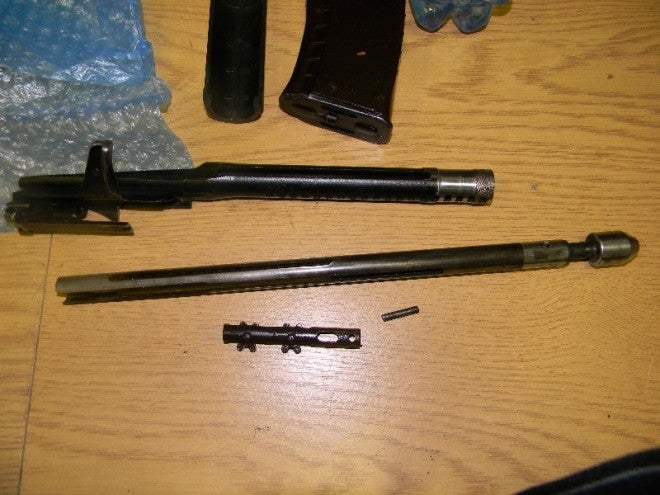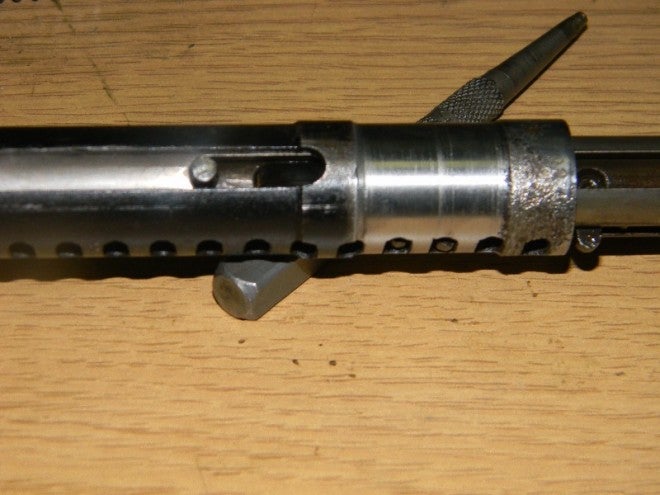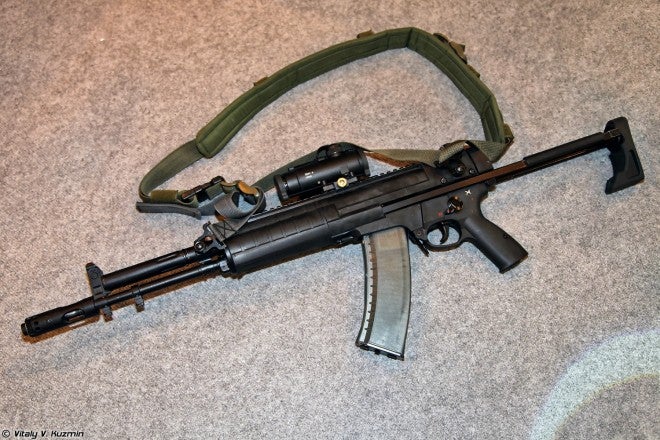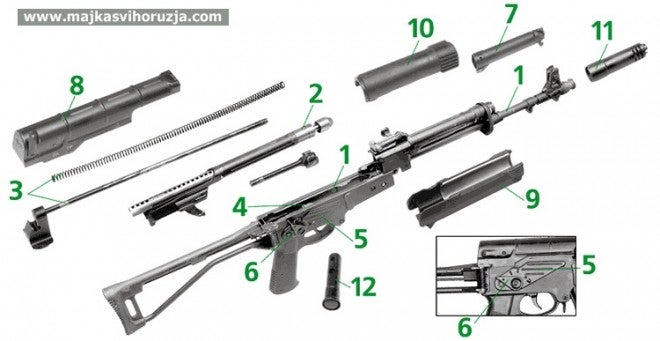The dark horse of the Russian next-generation individual weapon trials has been the A545, better known as the AEK-971. Where the AK-12 is essentially the well-known and respected Kalashnikov with some new architecture that supports the modern accessory-driven paradigm, the A545 is the incarnation of a more radical concept, dating back to the Abakan trials that produced the AN-94. While the AEK-971 and its derivatives fundamentally do trace their ancestry to the Kalashnikov, they incorporate the “balanced action” principle, where in addition to the mass moving rearwards, a forward-moving mass is coupled to the reciprocating group, which allows not only a great reduction in center-of-gravity shift during firing, but also gives a measure of constant-recoil effect to the firearm as well. Coupled with an effective muzzle brake, this mechanism dramatically reduces disturbances in fully automatic fire. Below is a Russian-language video from November of 2014 discussing the A545:
The maker of the A545 is Degtyarev Kovrov, one of the most important, and paradoxically one of the least celebrated in the West, Russian small arms manufacturing and design firms. Famous Russian weapons like the DP-28 light machine gun, PPSh-41 submachine gun, PTRD anti-tank rifle, PKM machine gun, and Kord heavy machine gun were manufactured and/or designed here. It is also true, though little known, that Kalashnikov perfected the design of his AK-46 and later AK-47 rifles in Kovrov, as well, even though his famous rifle is more closely associated with Izhevsk, where its production engineering was completed and where it was initially manufactured.
The A545 is, as the name suggests, the 5.45x39mm version of the latest-generation balanced action weapons, with the A762 being the 7.62x39mm variant.
The video mentions much of the above information, but also offers glimpses of the A545’s balanced piston system outside the gun. The bolt of the rifle is clearly derived from the AK’s proven rotary system, but the carrier is dramatically revised to allow for a nested forward-moving piston that is synchronized with the bolt carrier via a rack-and-pinion system. Both the forward-moving and rearward-moving pistons are acted upon by the bolt carrier:

The operating group of the A545, detail stripped. Visible is the rack and pinion system. Original source of these images is unknown to the author, but thanks goes out to Daniel Watters for passing them along.

A close-up of the rack-and-pinion mechanism assembled.
The video also repeats that the A545 was adopted by the Russian Army – given that it’s an industry piece, this may refer to an order placed by Russian SF, troop trials orders from the Russian Army, or something else entirely.
The A545 certainly provides a real improvement in full auto and semi-auto fire characteristics, but comes with the disadvantages of additional cost and complexity – though not to the degree that it’s former competitor the AN-94 did – and a mechanism that limits how short the barrel can be (the rifle’s barrel is about as short as it can be at 420mm/16.5″). In an era of reduced budgets for the Russian military, this tilts the balance in favor of the AK-12 for adoption as the next Russian standard issue rifle, but the benefits of the A545 are hard to ignore, and it is a reasonable prediction that it will see increased use with Russian special operations units.
Videos containing further footage of the A545 and AEK-971 are embedded below:
 Your Privacy Choices
Your Privacy Choices

